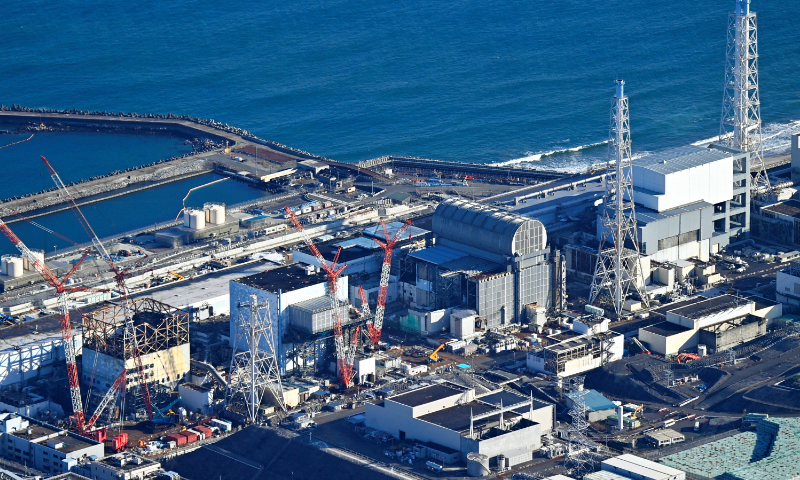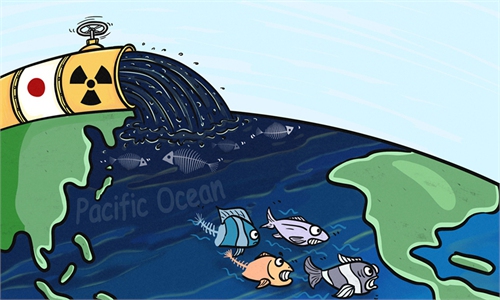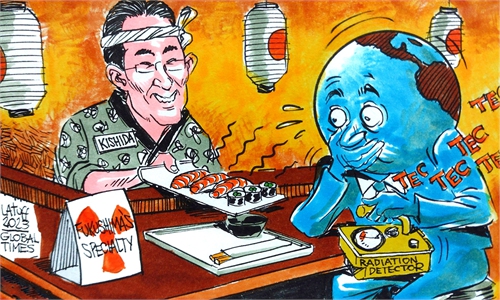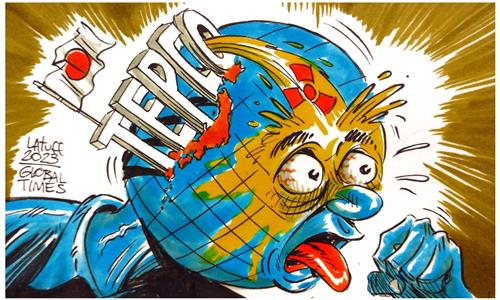Chinese environmental app starts to provide nuclear radiation data amid growing concerns over Japan’s reckless dumping

Aerial photo shows the damaged reactors at Fukushima Daiichi nuclear power plant on January 19, 2023, in Fukushima, Japan. Photo: VCG
China's public environmental database Blue Map App started to provide global nuclear radiation data from September 1 in order to increase the public's access to relevant data amid growing concerns over the impact of Japanese government's reckless dumping of Fukushima nuclear-contaminated wastewater. The Tokyo Electric Power Company (TEPCO) and the Japanese government should guarantee comprehensive, timely and complete publishing of data of the process of the dumping, the app developer told the Global Times on Sunday.The Global Times found on Sunday that nuclear radiation data of most cities in Asia and Europe are already available on the app. Ruan Qingyuan, chief technology officer of the service, told the Global Times that more places would be included in the future.
Ruan said currently the service mainly provides absobeddoserate of different places and the progress of the dumping.
The data are collected from official publishing platforms of different countries and regions. For example, data of cities on the Chinese mainland are collected from the National Radiation Environmental Data Evaluation System and those of cities in Fukushima prefecture in Japan are collected from the Fukushima radioactivity measurement map in the prefecture's governmental website, according to Ruan.
Logging onto the app on Sunday, the Global Times found that the map uses different colors ranging between dark red and dark blue to present different degree of absobeddoserate - the redder the color the higher the value. The only two places attached with dark red marks are Yamada and Minamidai districts near the Fukushima Daiichi nuclear power station.
The app also shows a line chart to make a contrast between current absobeddoserate and that before the Fukushima nuclear plant disaster happened. For example, in Yamada, the value was near zero before the disaster but was nearly 4,000 nSv/h (nanoSieverts per hour) on September 2.
Ma Jun, director of the Beijing-based Institute of Public and Environmental Affairs -- the developer of the Blue Map App, told the Global Times on Sunday that as the Japanese government has already opened the Pandora's Box, the TEPCO and the Japanese government should guarantee comprehensive, timely and complete publishing of data of the process of the dumping and accept supervisory of the international community.
Allowing the public to get timely access to radiation data will also help ease public concerns, Ma noted.
Ma called for enhanced monitoring measures on marine environment, marine products and marine animals, especially that data of offshore areas should be collected in more spots and reported more frequently.
In response to the Japanese government dumping the contaminated wastewater from the Fukushima nuclear plant into the ocean, multiple coastal cities including Wenzhou in East China's Zhejiang Province and Guangzhou in South China's Guangdong Province and Sanya in South China's Hainan Province have launched emergency monitoring on maritime environment and aquatic food.
The National Nuclear Safety Administration of China's Ministry of Ecology and Environment also announced on August 24 that relevant departments are organizing the marine radiation environment monitoring of China's jurisdictional sea areas in 2023. The ministry also vowed at a press conference on August 28 that it would continue to strengthen relevant monitoring efforts, closely track and assess the potential impact of contaminated water from the Fukushima nuclear plant on China's marine environment, and effectively safeguard the national interests and public health.



